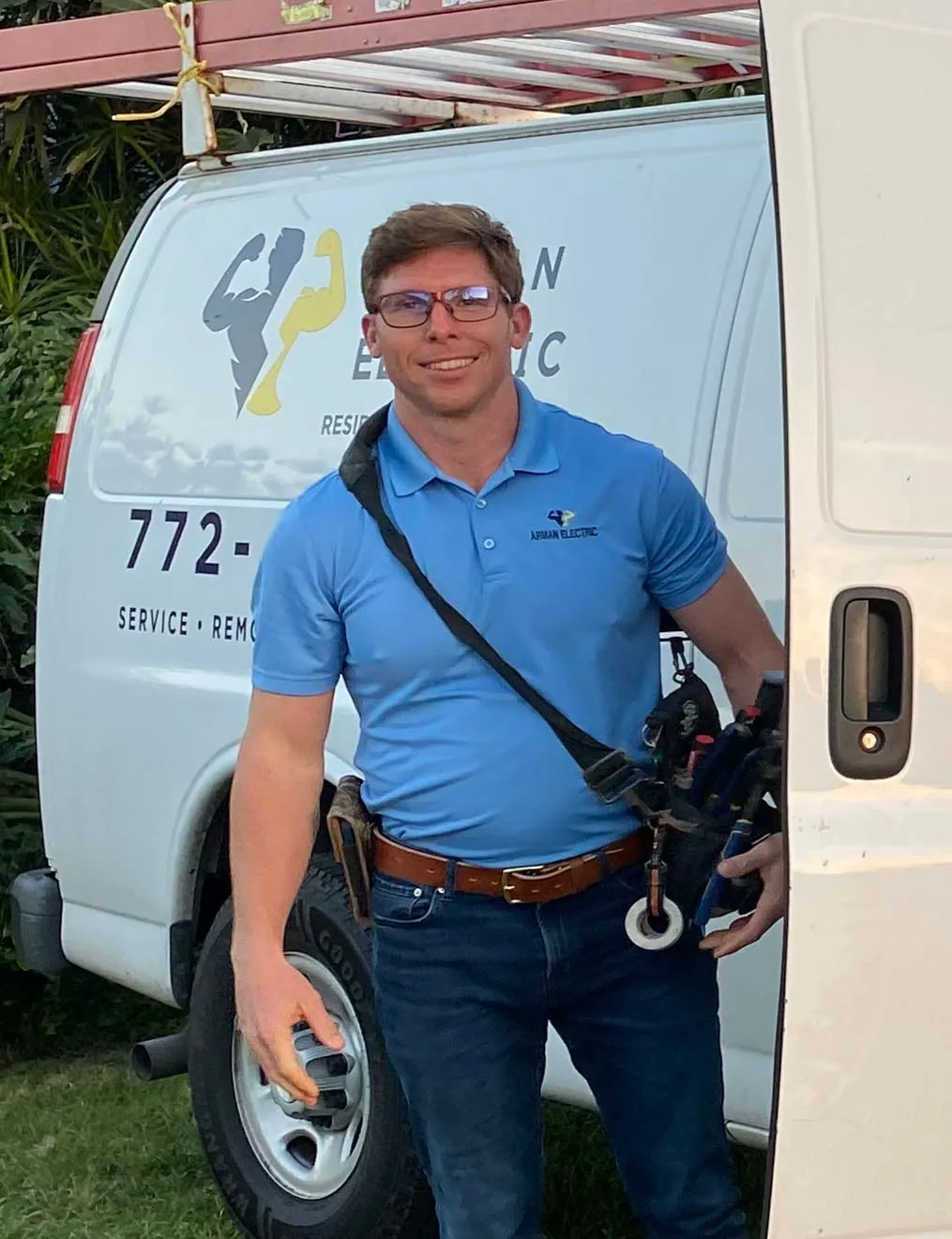Adding more circuits to your breaker panel can seem like a quick fix, but it’s more complicated than it appears. Your breaker panel might need an upgrade to safely accommodate extra circuits. Electrical systems are intricate, and adding circuits without the proper help can result in dangerous outcomes. When you want to add circuits, it’s best to consult with a Vero Beach electrical professional. A trained electrician will guide you through the process and make sure everything is done according to code. Our services help homeowners make informed decisions for their electrical needs.
What Is a Circuit Breaker Panel?
Components of a Circuit Breaker Panel
A circuit breaker panel has several important parts. The main breaker is the largest and controls the entire power flow to the home. The individual breakers control power to different circuits or rooms in the house. Bus bars are metal strips that carry electricity to the breakers. The neutral bus bar returns electricity to the panel, while the ground bus bar directs any excess or stray power into the ground to prevent shocks. These components all work together to ensure electricity flows safely and prevent electrical hazards in the home.
How a Circuit Breaker Panel Works
The circuit breaker panel manages electricity throughout the home. When power enters from the utility company, it passes through the main breaker and into the individual circuits. Each breaker protects different areas or devices by cutting off power if there’s an overload or short circuit. This is how the panel ensures safety. When an overload happens, the breaker will trip, cutting off power to prevent damage or fire. The main breaker can also shut off all power in the home for safety or maintenance purposes, making it a vital part of the system.
Can You Add Circuits to Your Existing Breaker Panel?
Signs Your Panel Needs an Upgrade
Your electrical panel might need an upgrade if it frequently trips breakers or if your home is older. If your breakers feel hot or you notice burnt smells, it’s time to act. An overloaded panel can be dangerous. Another sign is when your home uses more electricity than it used to, such as when adding new appliances. If your current panel can’t handle the load, an upgrade will be needed. Flickering lights or dimming when using certain appliances can also signal that your panel isn’t doing its job properly.
Understanding Circuit Breaker Limitations
Circuit breakers are designed to protect your home’s electrical system. However, each breaker can only handle a certain amount of power. If you add too many appliances to a circuit, the breaker will trip to stop overheating. Older breakers may not meet today’s electrical needs. You also need enough space in your breaker panel for new circuits. If your panel is full, adding more breakers could require replacing the entire panel. Breakers can only protect against overloads, not against other issues like faulty wiring or short circuits.
Steps to Add More Circuits Safely
Assessing Your Electrical Needs
Before adding circuits, assess how much power your home needs. Start by checking the appliances you use regularly. Are they drawing a lot of power? If you’re planning to add more devices or machines, think about how the current system handles that load. An overloaded circuit can be dangerous. You should also evaluate the age of your electrical panel. Older systems may not handle modern power needs. If the power requirements aren’t clear, it’s best to consult a professional. They can help you determine how many circuits are required to keep everything running smoothly.
Hiring a Professional for Installation
Installing additional circuits requires more than just technical knowledge. A professional will make sure the installation meets local safety codes and is done correctly. They have the tools and experience to complete the job safely. Improper installation could cause fires or damage to your appliances. It’s important not to cut corners when working with electricity. A trained professional can assess your panel and determine if it has enough room for new circuits. They will handle the wiring and testing to make sure everything works well and safely. Electrical work should never be a DIY project.
Common Risks of Adding Circuits Without a Panel Upgrade
Overloading Your Electrical System
Adding circuits without upgrading your electrical panel can easily overload the system. Each circuit breaker is designed to handle a specific load. If you add too many devices, your panel may not be able to distribute power evenly. Overloading a system can cause circuits to trip frequently, and in some cases, it can lead to overheating or fires. It’s important to assess your home’s power needs before adding more circuits. An upgraded panel helps prevent these issues. Without the upgrade, your system may fail to keep up with your growing electrical needs, posing a safety risk.
Code Violations and Safety Hazards
Adding circuits without upgrading your panel can result in code violations. Electrical codes are in place to keep homes safe. If your panel is outdated or not large enough to handle additional circuits, you may violate these codes. This can result in unsafe wiring, putting your home and family at risk. Inspections may reveal unsafe wiring, and you could be forced to correct the installation. Upgrading your panel helps meet the latest electrical codes. This helps make sure all installations are safe and in line with current regulations, protecting you from potential dangers.
When Should You Replace Your Breaker Panel?
Recognizing Red Flags in Your Panel
There are several signs that your breaker panel may need replacement. If your breakers trip frequently or won’t reset, that’s a sign of trouble. A burning smell or scorch marks around the panel are serious red flags. Panels older than 25-30 years may no longer meet modern electrical needs and can be dangerous. If your panel can’t handle your home’s electrical load, it could cause overloads. Another warning is if your home has outdated or mismatched breakers. Any of these signs mean it’s time to replace your panel and upgrade your system for safety.
How to Choose the Right Breaker Panel for Your Home
Choosing the right breaker panel depends on your home’s electrical needs. The size of your panel should match the amount of electricity your home uses. Think about your current power usage and future needs. A licensed electrician can help you select the right panel size. You also need to make sure the panel meets local safety codes and is compatible with your home’s wiring. Panels come in different types, including standard and subpanels. Your choice will depend on factors like the number of circuits you need and the space available for installation.
Get Safe Electrical Upgrades with Arman Electric
Expanding your home’s electrical system by adding circuits may seem simple, but it can lead to risks if not done correctly. Without the proper upgrades, your breaker panel may struggle to handle the extra load, creating safety issues. It’s important to work with a professional to make sure everything is done safely and according to code.
Arman Electric provides a range of electrical services, from breaker panel upgrades to circuit installations and more. Our team is dedicated to helping homeowners make informed decisions about their electrical systems. Contact us today at 2770 Indian River Blvd # 319, Vero Beach, FL 32960, or call 772-469-6675 for trusted service.



